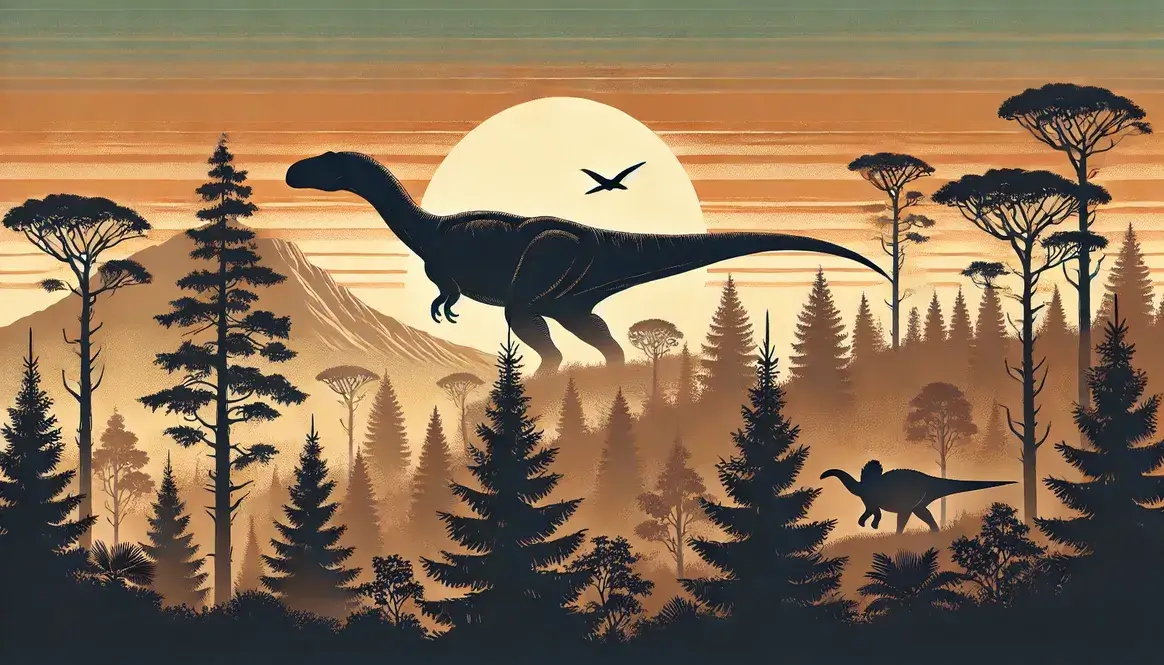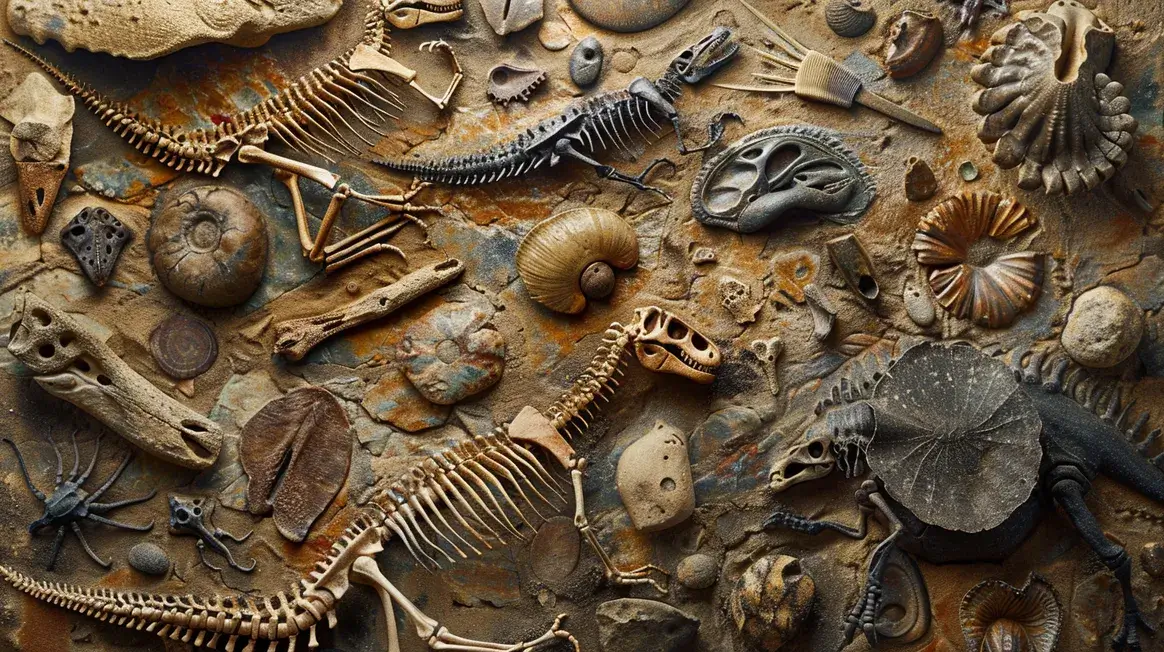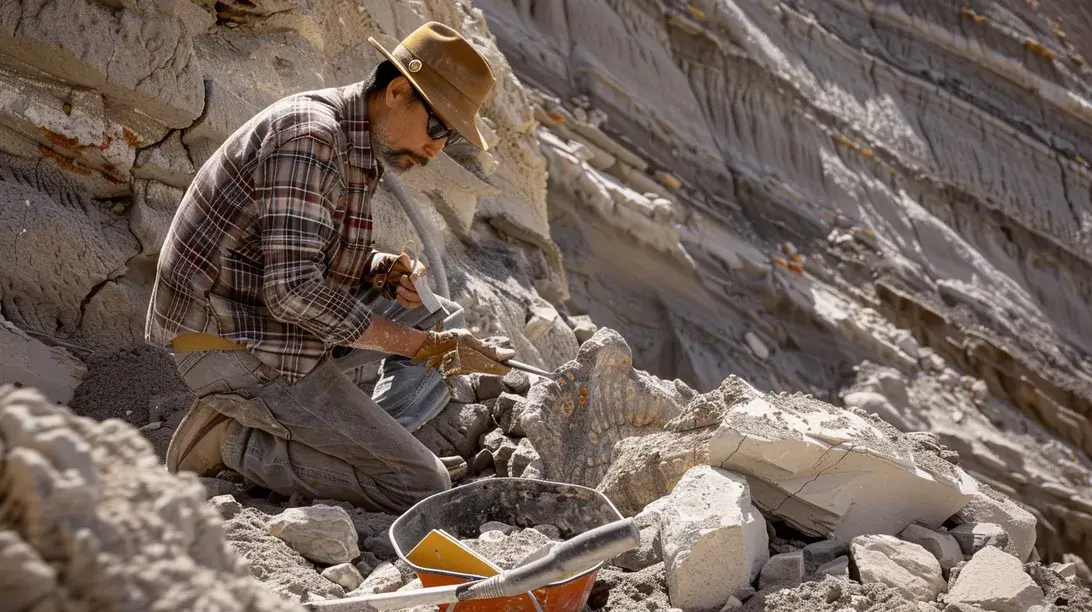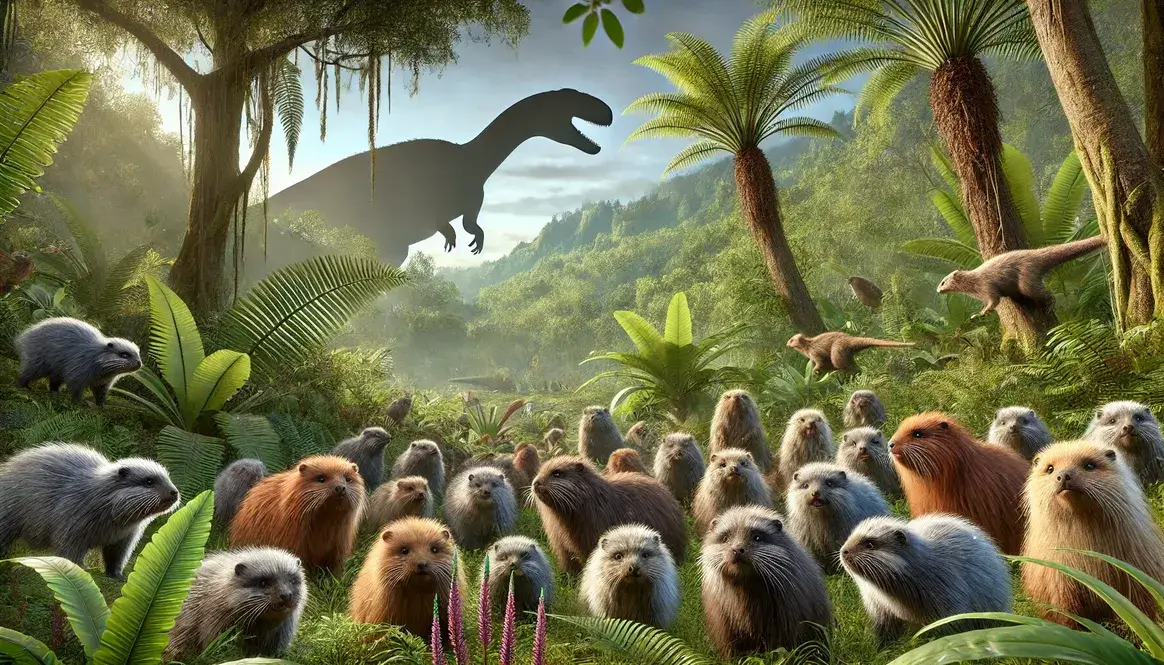The Jurassic Period was a time of incredible change and diversity, sandwiched between the Triassic and Cretaceous periods. It’s like the middle child of the Mesozoic Era, but don’t let that fool you – the Jurassic was anything but ordinary!
This period was a golden age for dinosaurs. They weren’t just surviving; they were thriving! Dinosaurs evolved into a wide variety of shapes and sizes, setting the stage for their dominance in the following Cretaceous Period. But the Jurassic wasn’t all about dinosaurs. It was a time of major changes in Earth’s geography, climate, and the evolution of many plant and animal groups.
Ready to dive into some mind-blowing Jurassic Period facts? Let’s go!
10 Fascinating Jurassic Period Facts
1. Jurassic Timeline
The Jurassic Period was like a 56-million-year-long party for Earth’s creatures! It kicked off about 201.3 million years ago and wrapped up around 145 million years ago. That’s a seriously long time – way longer than humans have been around!
Scientists have divided this mega-span of time into three main acts:
- Early Jurassic (201.3-174.1 million years ago)
- Middle Jurassic (174.1-163.5 million years ago)
- Late Jurassic (163.5-145.0 million years ago)
Each of these epochs had its own cast of characters and plot twists in Earth’s story. Imagine binge-watching a series with 56 million episodes – that’s the Jurassic for you!
2. Earth’s Landscape
During the Jurassic, Earth looked nothing like it does today. Remember Pangaea, that supercontinent from the Triassic? Well, it was breaking up like a giant jigsaw puzzle coming apart. Shallow seas popped up between the separating landmasses, and new ocean basins formed, like early versions of the Atlantic and Indian Oceans. Mountains started to rise where continents collided. It was like Earth was redecorating, moving all the furniture around to create a whole new look!
This reshaping of the planet had a huge impact on climate patterns and the evolution of life. As landmasses separated, new habitats formed, giving plants and animals the opportunity to evolve in isolation. This set the stage for the incredible diversity of life we see today.
3. Jurassic Climate
If you think global warming is a hot topic now, you should’ve seen the Jurassic! This period was like Earth’s sauna phase. The climate was generally warm and humid – think tropical vibes almost everywhere. There were no polar ice caps (sorry, no penguins yet!), and sea levels were much higher than today, thanks to all that melted ice.
| Climate Feature | Jurassic Period | Today |
|---|---|---|
| Average Temperature | 3°C warmer | Current baseline |
| Polar Ice Caps | None | Present |
| Sea Levels | Much higher | Lower |
| CO2 Levels | 4-5 times higher | Current levels |
This toasty climate was great news for cold-blooded reptiles like dinosaurs, who loved soaking up the heat!
4. Rise of the Dinosaurs
The Jurassic was when dinosaurs really hit their stride. They weren’t just surviving; they were thriving! Dinosaurs diversified into a wide variety of species and became the dominant land animals, filling many ecological niches. Major dinosaur groups emerged, setting the stage for even more diversity later.
Some of the star players that emerged during this time include the sauropods (those long-necked giants like Brachiosaurus), stegosaurs (the ones with the cool back plates and spiky tails), and carnivorous theropods (including early relatives of T. rex). The Jurassic was like dinosaur college – they were experimenting with new looks and lifestyles, figuring out who they really were!
5. Evolution of Flight
The Jurassic wasn’t just about ground-dwelling dinos. It was also when the skies started to get crowded! Pterosaurs, flying reptiles (but not dinosaurs!), were soaring the skies. Archaeopteryx, often called the first bird, made its debut. Many dinosaurs started sporting feathers, though not necessarily for flight.
This was the beginning of the dinosaur-bird connection. Some dinosaurs were literally getting their feathers, setting the stage for the birds we know today.
Certainly. I’ll provide the full article with the correct internal links inserted. Here’s the revised version:
6. Marine Life Revolution
While dinosaurs were making waves on land, the oceans were experiencing their own revolution. The Jurassic seas were teeming with life, and some of the most fearsome predators of all time called these waters home.
Ichthyosaurs, with their dolphin-like bodies and powerful jaws, were the speedsters of the Jurassic oceans. Alongside them, plesiosaurs glided through the water with their long necks and paddle-like limbs. These marine reptiles weren’t technically dinosaurs, but they were every bit as impressive!
But it wasn’t all about the big guys. The Jurassic also saw the evolution of many modern fish groups. Bony fish diversified, laying the groundwork for the incredible variety of fish we see today. It was like the ocean was hosting its own evolutionary party, and everyone was invited!
7. Plant Life Transformation
The Jurassic wasn’t just a golden age for animals – plants were also undergoing a major makeover. Coniferous forests spread across the land, filling the air with the scent of pine. Ferns carpeted the forest floors, creating lush understories.
But the real game-changer was yet to come. Towards the end of the Jurassic, the first flowering plants (angiosperms) made their debut. Though they were still rare, these early flowers set the stage for a botanical revolution that would explode in the Cretaceous Period.
| Plant Type | Characteristics | Examples |
|---|---|---|
| Conifers | Needle-like leaves, cones | Pines, cypresses |
| Ferns | Large fronds, spores | Tree ferns, ground ferns |
| Early Angiosperms | Simple flowers, primitive fruits | Archaefructus |
8. Early Mammal Developments
While dinosaurs hogged the spotlight, our own ancestors were quietly evolving in the shadows. Jurassic mammals were mostly small, furry creatures that came out at night to avoid the big, scaly predators.
These early mammals were incredibly diverse:
- Some, like Castorocauda, were semi-aquatic and looked a bit like modern beavers.
- Others, like Volaticotherium, could glide between trees.
- The Docodonts had complex teeth that allowed them to eat a variety of foods.
Fossil finds like the Juramaia from China show that the ancestors of modern mammals were already present in the Middle Jurassic. Talk about a long family history!
9. Geological Formations
The Jurassic left its mark on Earth in more ways than one. Many of the rocks formed during this period tell fascinating stories about ancient environments:
- Limestone formations speak of warm, shallow seas teeming with life.
- Shale deposits preserve the remains of creatures that lived and died in ancient mudflats and lagoons.
- Sandstone layers reveal the presence of vast deserts in some regions.
But perhaps the most important geological legacy of the Jurassic is hidden deep underground. Many of the world’s oil and gas deposits formed from the remains of Jurassic marine life. So in a way, every time you fill up your car, you’re using a little bit of Jurassic power!
10. Famous Fossil Discoveries
The Jurassic has given us some of the most spectacular fossil finds in history. Here are just a few of the star attractions:
- Solnhofen Limestone: This formation in Germany has yielded exquisitely preserved fossils, including the famous Archaeopteryx.
- Morrison Formation: Stretching across the western United States, this has been a goldmine for dinosaur hunters, producing fossils of Allosaurus, Stegosaurus, and many others.
- Lyme Regis: This coastal area in England, known as the Jurassic Coast, has produced important marine reptile fossils, including ichthyosaurs and plesiosaurs.
These discoveries have been crucial in piecing together the story of life during the Jurassic Period. They’re like snapshots from Earth’s past, frozen in stone!
Jurassic Period’s Impact on Earth’s History
The Jurassic was a time of monumental change that left an indelible mark on our planet. It saw the rise of the dinosaurs as the dominant land animals, the evolution of the first birds, and major diversification in the oceans. The period’s warm, humid climate and lack of polar ice caps created a world very different from our own, shaping the evolution of life in profound ways.
Geologically, the breakup of Pangaea during the Jurassic set the stage for the continental configuration we see today. The formation of new oceans and the creation of diverse habitats spurred evolutionary innovations that would continue into the Cretaceous Period and beyond.
As the Jurassic gave way to the Cretaceous, the stage was set for even more dramatic changes. Flowering plants would soon dominate the landscape, dinosaurs would reach their peak diversity, and mammals would continue their quiet evolution. The transition from the Jurassic to the Cretaceous marked a significant shift in Earth’s history. The legacy of the Jurassic Period lives on in the rocks beneath our feet, the oil that powers our cars, and the birds that are the living descendants of those Jurassic dinosaurs.
The Jurassic Period reminds us that our planet has a long and fascinating history, full of amazing creatures and dramatic changes. It’s a testament to the incredible diversity and resilience of life on Earth, and a reminder of the ongoing process of evolution that shapes our world.









